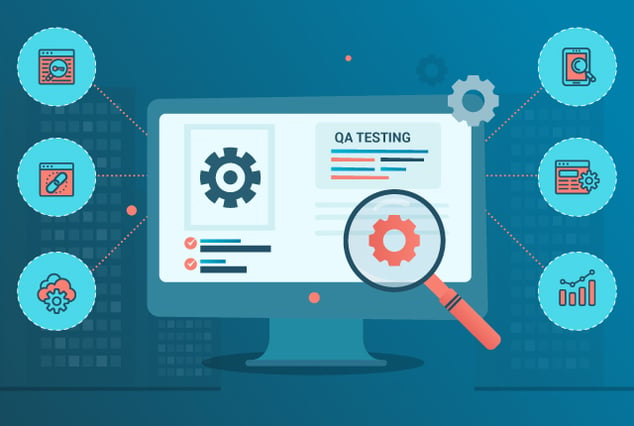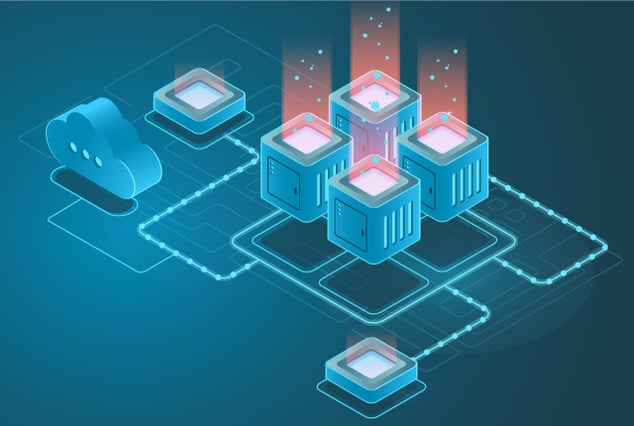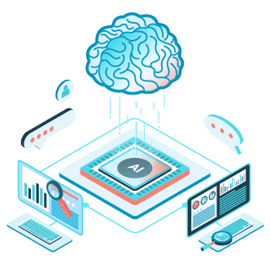
Technology is evolving unprecedentedly, and the internet is no exception. The third and latest generation of the World Wide Web (www), Web 3.0, is set to revolutionize how we interact with the Internet. Web 3.0 is an ambitious vision of a decentralized and ‘open to everyone’ web of the user. It is a paradigm shift from the previous versions of the internet, Web 1.0 and Web 2.0.
Web 1.0 was a "read-only" version that lacked user interaction, while Web 2.0, referred to as "The participative Web" allowed for content production and information sharing. Web 3.0, on the other hand, is being built with cutting-edge technologies such as artificial intelligence (AI), machine learning (ML), Big Data, and decentralized ledger technology (DLT). With this technology, Web 3.0 will enable smarter and more human-like ways of processing information.
Also known as the "Semantic Web" or the "Decentralized Web", Web 3.0 is characterized by enhanced interconnectivity, decentralization, and a focus on data semantics.
The future is here, and Web 3.0 is leading the way.
Web 1.0 vs. Web 2.0 vs. Web 3.0
| Web 1.0 | Web 2.0 | Web 3.0 | |
|---|---|---|---|
|
Type
|
Static Web
|
Interactive Web
|
AI-Powered Interactive Web
|
|
Technologies
|
HTML
|
Java Script Dynamic HTML
|
Artificial Intelligence Machine Learning Blockchain
|
|
Data Storage
|
On Server of individual websites
|
Big tech companies own the data
|
Distributed across users
|
|
Advertising
|
Obtrusive
|
Interactive
|
Based on user behavior
|
|
Evolution
|
Netscape navigator was launched as the first web browser
|
Predominance of interactive websites and platforms
|
Using decentralized data networks, consumers can control their data.
|
Role of AI in Web 3.0
AI plays a significant role in shaping and supporting the development of Web 3.0 in various ways:
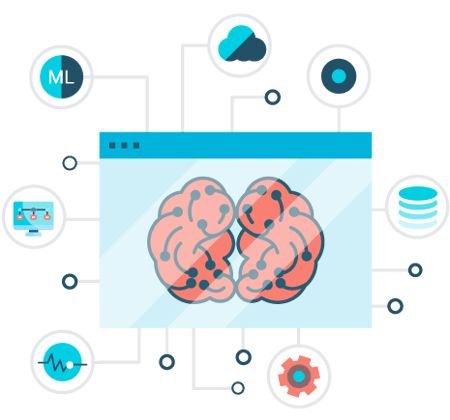
-

Artificial Intelligence and Machine Learning: Semantic Web concepts and natural language processing (NLP) based technologies in Web 3.0 allow computers to comprehend information like humans. Web 3.0 employs Machine Learning that uses data and algorithms to imitate human learning techniques, thus enhancing its accuracy over time. These abilities enable computers to deliver faster and more pertinent outcomes.
-

Search and Discovery: The decentralized and diverse nature of Web 3.0 content poses a challenge for traditional search engines. However, AI-driven search algorithms can navigate this varied terrain adeptly, providing more precise and contextually relevant search results.
The collaboration of Web 3.0 with AI plays a significant role in shaping the next generation of the internet. AI's capabilities in data interpretation, decentralized app development, security, personalization, and content curation can enhance its overall capabilities when integrated with decentralized technologies in Web 3.0.
Benefits/Challenges of AI in Web 3.0
Benefits |
Challenges |
|---|---|
| Personalization: Based on user preferences, behavior, and context, AI can enable more personalized and tailored interactions between users and machines. | Data Privacy: AI relies heavily on data to train algorithms and make predictions, but the use of personal data can raise concerns about privacy and data protection. |
| Artificial Intelligence: The utilization of AI technology enables the processing and analysis of large amounts of data in real-time, surpassing previous capabilities. This offers significant advantages in decision-making, image recognition, and the detection of misinformation. | Bias: AI algorithms can be biased, especially if trained on biased data or designed with implicit biases. |
| Relevant and Engaging Information: ML is utilized in Web 3.0 to give more pertinent and engaging content, personalized suggestions, and efficient search results. | Trust: AI can be perceived as a black box, making it difficult for users to understand how decisions are made or how data is used. |
| Improved User Experience: Utilizing computer vision, speech recognition, NLP, and AI enables more intuitive and natural interactions between humans and machines. | Ethics: The use of AI can raise ethical concerns, especially when it comes to issues such as autonomy, accountability, and responsibility. |
| Data Analysis and Insights: Using ML algorithms and predictive analytics, AI enables more sophisticated data analysis and insights. | Technical Challenges: AI systems can be complex and require significant technical expertise to develop and maintain. |
| Effective Search Results: ML is crucial for improving Web 3.0 user experiences, especially regarding search results that are helpful to users. | |
| Chatbots: As a more natural and user-friendly means of interacting with websites and applications, chatbots and conversational interfaces are growing in popularity in Web 3.0. Machine learning algorithms underpin these interfaces, enabling them to learn from user interactions and develop better responses over time. |
Future of Web 3.0
The future of Web 3.0, characterized by decentralization and blockchain integration, presents several key monetization trends outlined in Quytech's blog. These trends include the rise of NFTs, DeFi, and the metaverse, offering new opportunities for creators and users.
Web 3.0 emphasizes user data ownership and privacy, with blockchain-based solutions enhancing trust and transparency. Decentralized autonomous organizations (DAOs) are reshaping decision-making and monetization models, emphasizing equitable distribution of profits and governance. Web 3.0 signifies a transformative era, necessitating adaptability for businesses and individuals to thrive in this evolving digital landscape.
Global Web 3.0 Market Size to Reach USD 81.5 Billion in 2030
Growing at a CAGR of 43.7%
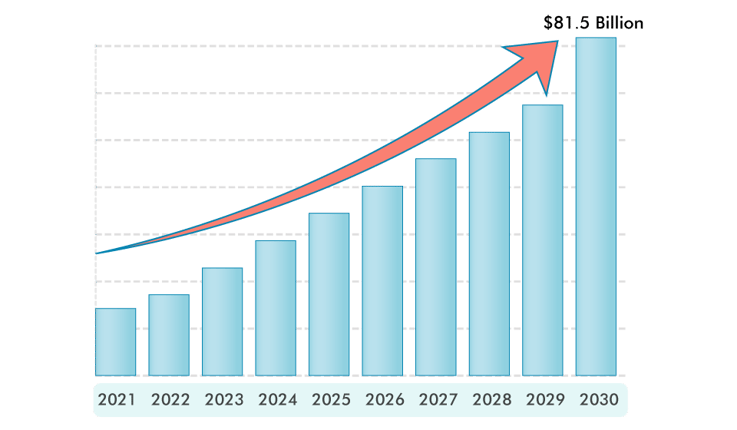
What can QASource Do To Add Value in Testing Web 3.0 Applications?
The latest web version may pose challenges like lack of acceptance, usability issues, and mobile unfriendliness. However, we are confident in our ability to overcome them and provide a seamless experience for all users.
Our software development process includes a comprehensive set of testing types to ensure the final product's high quality. One of the critical testing types we incorporate is Regulatory Compliance testing. This testing is crucial to ensure our applications conform to all applicable regulations, especially in data privacy. We understand the importance of meeting regulatory requirements and strive to deliver software solutions that meet the highest quality and compliance standards.
Data Distribution Testing
Ensuring the accuracy and integrity of data replication across a decentralized network is a crucial task that requires rigorous testing.
Security Audits
Our team specializes in conducting thorough security audits of smart contracts to identify and address vulnerabilities such as reentrancy, integer overflow, and unauthorized access.
Blockchain Performance Testing
Conducting performance testing on a blockchain to evaluate its behavior and efficiency under varying loads and transaction volumes.
Scalability Testing
Determining whether the application can grow as user and transaction volumes rise. Checking the decentralized network for any potential bottlenecks.
Cross-Chain Testing
Verifying the compatibility of any networks or blockchains that the application interacts with.
Testing the functionality of APIs that communicate across various application components.
Data Access Control Testing
Testing the data access control system to ensure users have access control and may grant or revoke access as necessary.
Data Encryption Testing
Test data encryption and decryption systems to protect user data.
Usability Testing
Assessing the user interface's accessibility and usability to ensure it meets user expectations.
Cross-Browser and Cross-Platform Testing
Checking that the application functions consistently across various browsers and systems by doing cross-browser and cross-platform testing.
Continuous Testing and Automation
Implementing automated testing suites for regression testing and CI/CD pipelines (continuous integration/continuous deployment) to assure continuing quality.
Testing Web 3.0 applications demands a specialized skill set owing to the unique technologies involved. At QASource, we collaborate closely with testers, developers, and blockchain experts to effectively address the complexities of decentralized applications.
We firmly believe in staying abreast of the latest advancements in blockchain and decentralized technologies, as it is vital for ensuring effective testing in the Web 3.0 era.
Key Takeaways
As we move towards the advent of Web 3.0, it becomes increasingly important to recognize the prospects it promises to offer while the Web 2.0 wave continues to produce significant results. With Web 3.0, users can contribute to web content, govern it, and ensure the privacy of their data. Integrating AI-powered Web 3.0 will guarantee a more personalized and tailored user experience, effectively replacing traditional search assistants.
At QASource, we are well-equipped with a team of skilled engineers to ensure the delivery of high-quality products with reliable Web 3.0 operations. Trust QASource, a reputed software QA services provider, to meet your organization's specific AI testing needs and elevate the quality of your software systems.
Have Suggestions?
We would love to hear your feedback, questions, comments and suggestions. This will help us to make us better and more useful next time.
Share your thoughts and ideas at knowledgecenter@qasource.com
